STREET ART ON CHANCERY STREET – MARY’S LANE
Luas Kiss by Amy Caulfield. Amy is a graphic design student from Monaghan who lives and works in Dublin city. She loves imagining and visualising unusual stories to bring a funny slant to everyday happenings. She is also a BIG fan of the Luas.
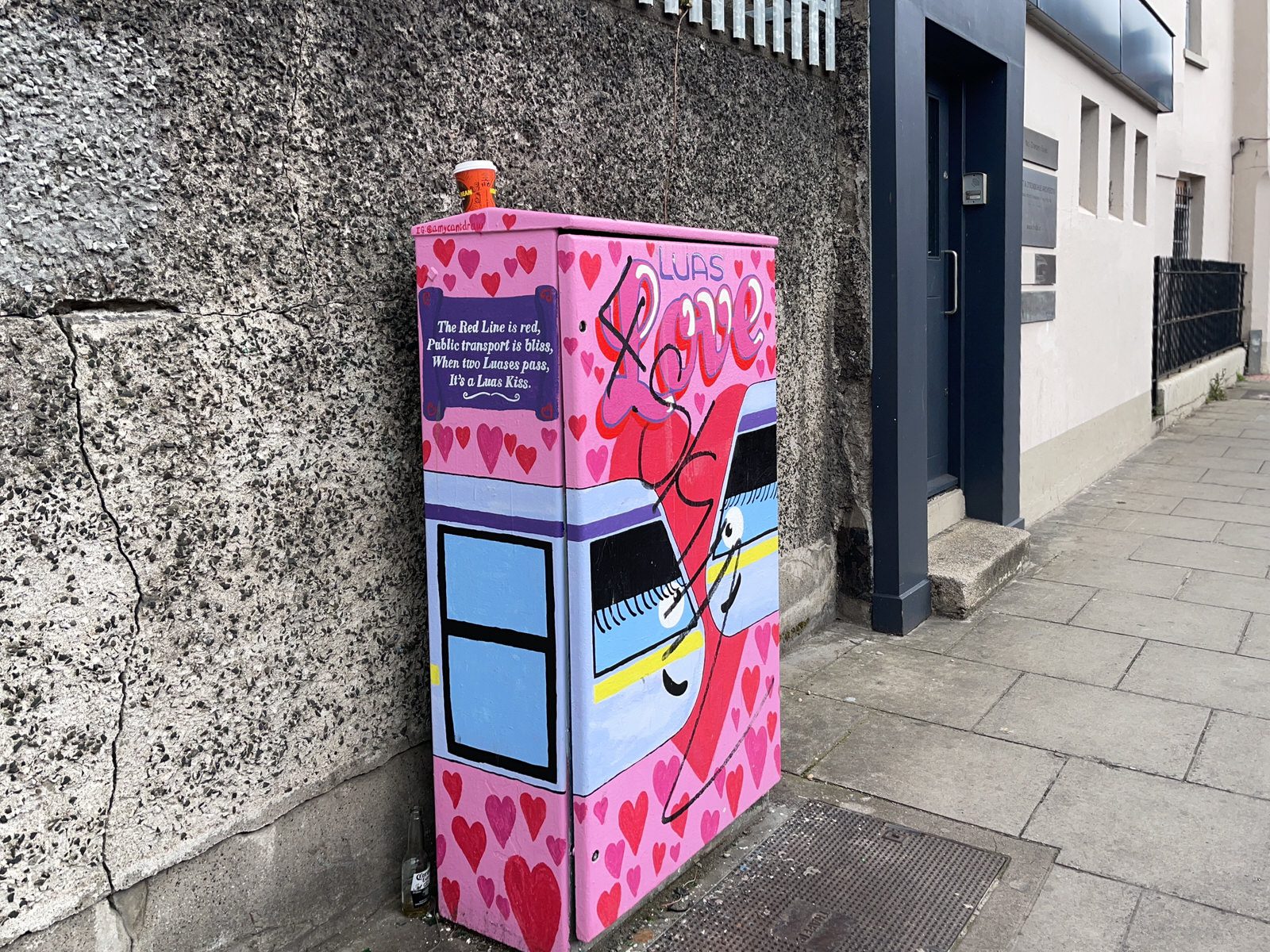
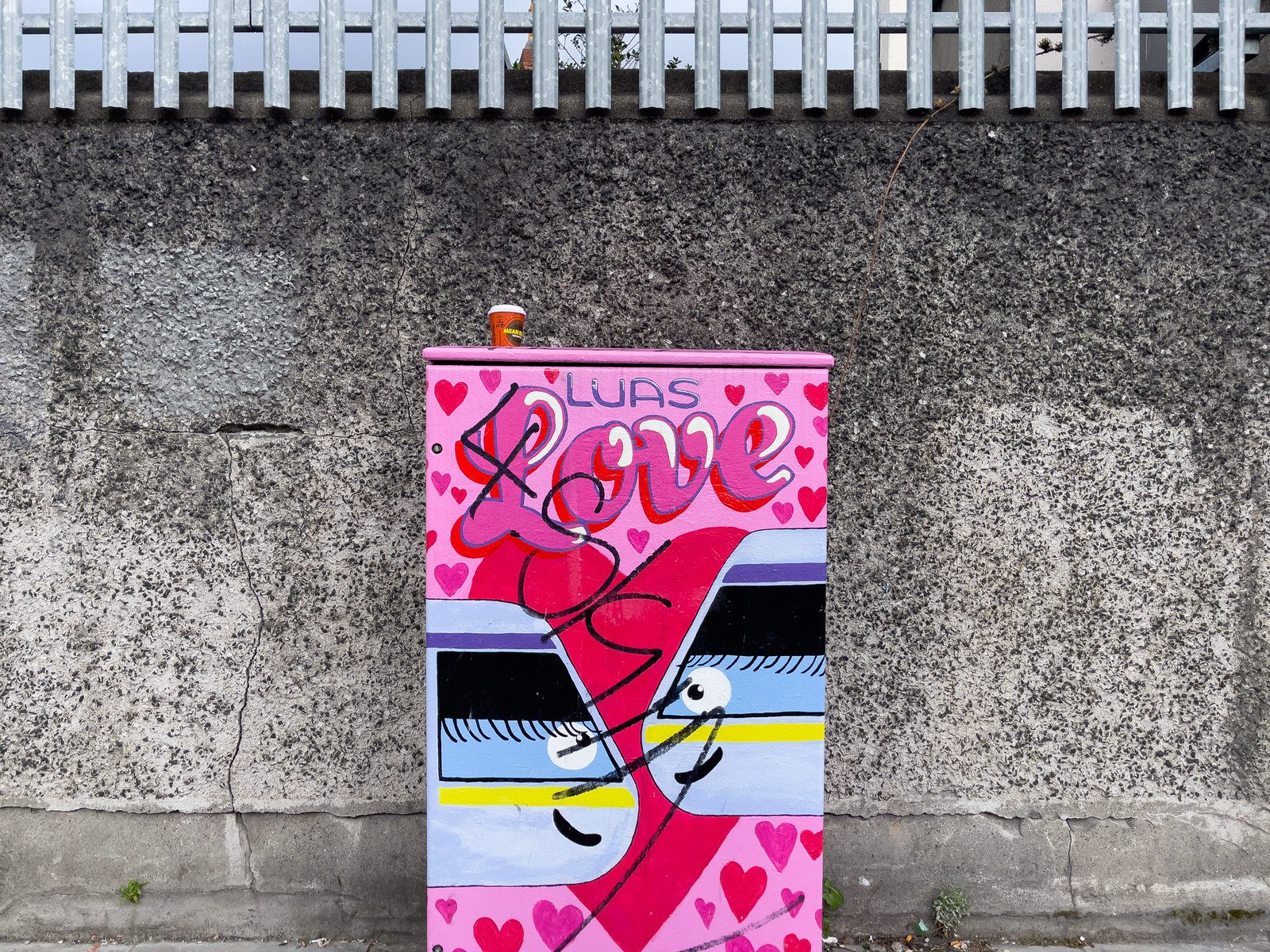
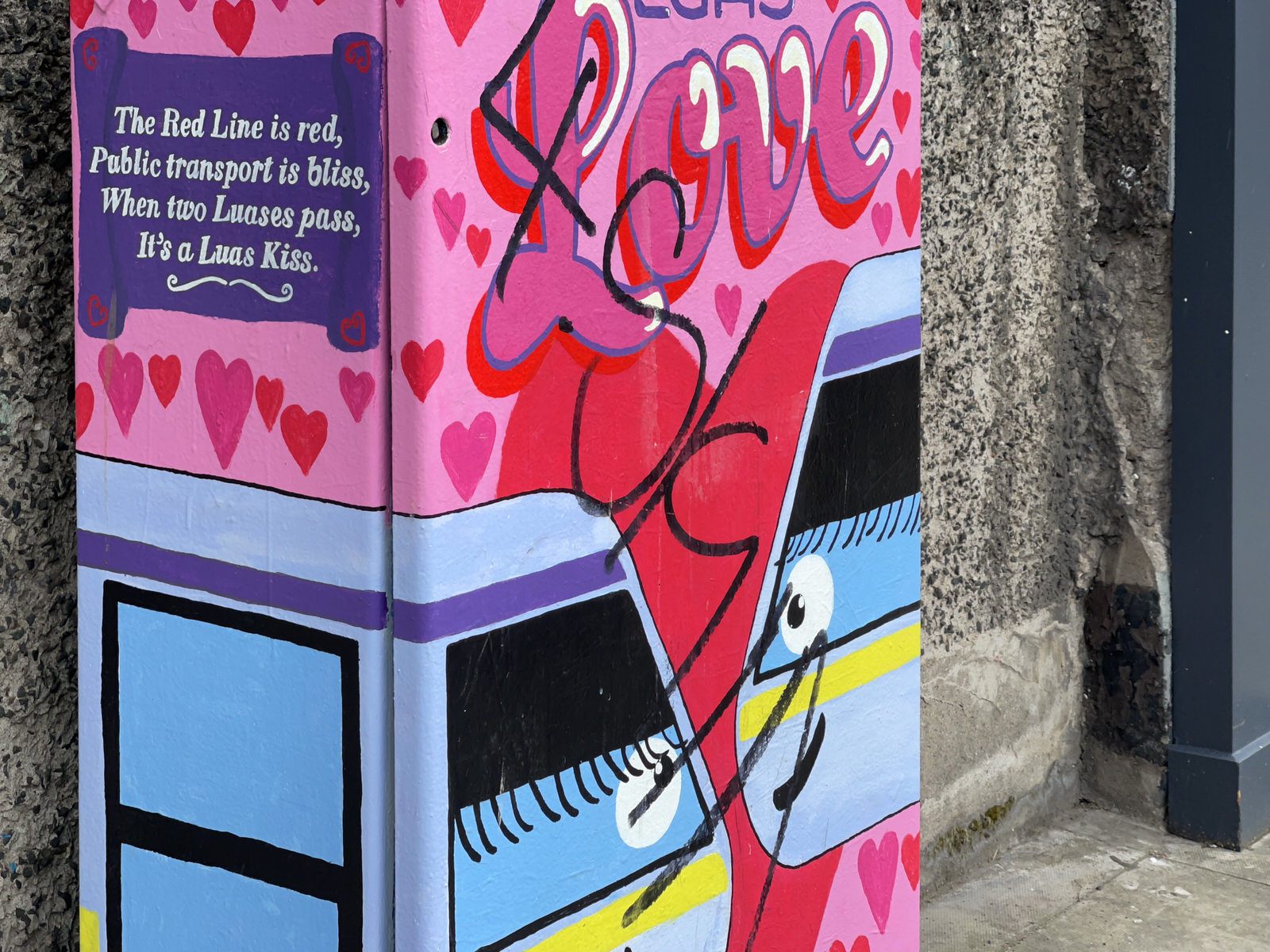
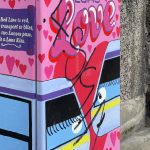

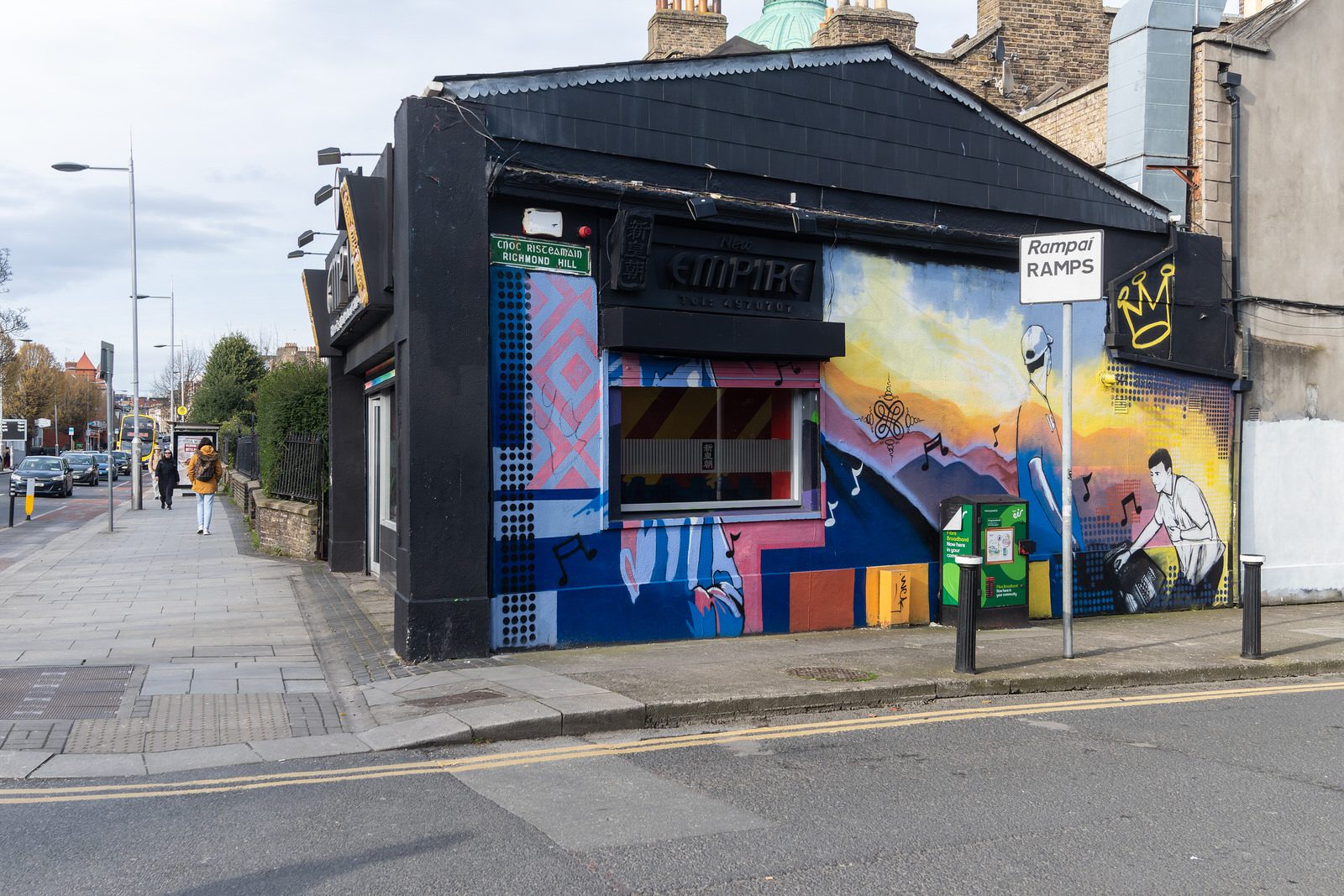
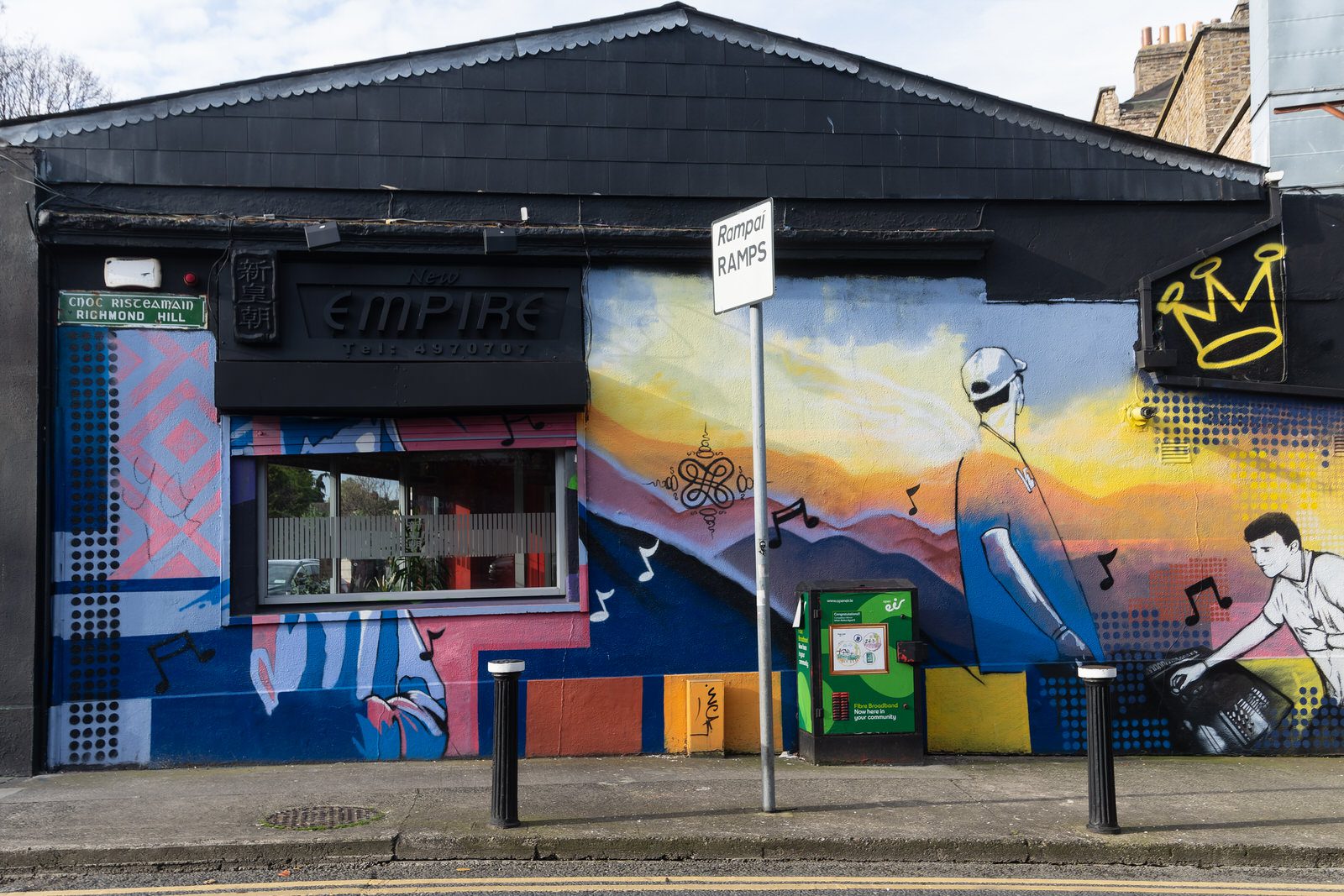
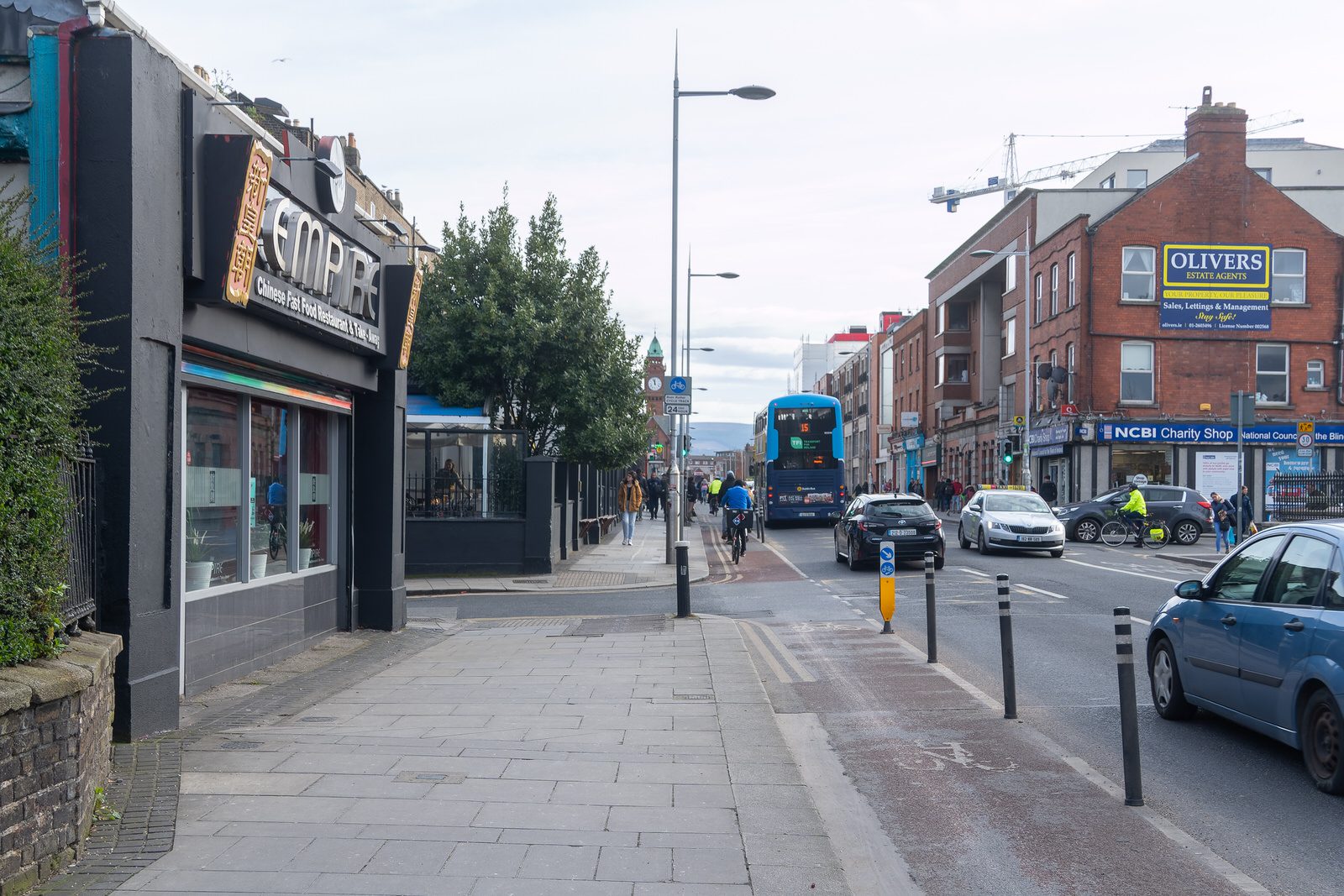

![URBAN EXPRESSION AND A DEGREE OF DEPRESSION [LIBERTY LANE]-215651-1 URBAN EXPRESSION AND A DEGREE OF DEPRESSION ON LIBERTY LANE 001](https://excellentstreetimages.com/HeadlessUrbanExpression/wp-content/uploads/2023/03/URBAN-EXPRESSION-AND-A-DEGREE-OF-DEPRESSION-LIBERTY-LANE-215651-1.jpg)
![URBAN EXPRESSION AND A DEGREE OF DEPRESSION [LIBERTY LANE]-215635-1 URBAN EXPRESSION AND A DEGREE OF DEPRESSION ON LIBERTY LANE 0013](https://excellentstreetimages.com/HeadlessUrbanExpression/wp-content/uploads/2023/03/URBAN-EXPRESSION-AND-A-DEGREE-OF-DEPRESSION-LIBERTY-LANE-215635-1.jpg)
![URBAN EXPRESSION AND A DEGREE OF DEPRESSION [LIBERTY LANE]-215634-1 URBAN EXPRESSION AND A DEGREE OF DEPRESSION ON LIBERTY LANE 014](https://excellentstreetimages.com/HeadlessUrbanExpression/wp-content/uploads/2023/03/URBAN-EXPRESSION-AND-A-DEGREE-OF-DEPRESSION-LIBERTY-LANE-215634-1.jpg)
![URBAN EXPRESSION AND A DEGREE OF DEPRESSION [LIBERTY LANE]-215642-1 URBAN EXPRESSION AND A DEGREE OF DEPRESSION ON LIBERTY LANE 015](https://excellentstreetimages.com/HeadlessUrbanExpression/wp-content/uploads/2023/03/URBAN-EXPRESSION-AND-A-DEGREE-OF-DEPRESSION-LIBERTY-LANE-215642-1.jpg)
![URBAN EXPRESSION AND A DEGREE OF DEPRESSION [LIBERTY LANE]-215641-1 URBAN EXPRESSION AND A DEGREE OF DEPRESSION ON LIBERTY LANE 016](https://excellentstreetimages.com/HeadlessUrbanExpression/wp-content/uploads/2023/03/URBAN-EXPRESSION-AND-A-DEGREE-OF-DEPRESSION-LIBERTY-LANE-215641-1.jpg)
![URBAN EXPRESSION AND A DEGREE OF DEPRESSION [LIBERTY LANE]-215640-1 URBAN EXPRESSION AND A DEGREE OF DEPRESSION ON LIBERTY LANE 017](https://excellentstreetimages.com/HeadlessUrbanExpression/wp-content/uploads/2023/03/URBAN-EXPRESSION-AND-A-DEGREE-OF-DEPRESSION-LIBERTY-LANE-215640-1.jpg)
![URBAN EXPRESSION AND A DEGREE OF DEPRESSION [LIBERTY LANE]-215639-1 URBAN EXPRESSION AND A DEGREE OF DEPRESSION ON LIBERTY LANE 018](https://excellentstreetimages.com/HeadlessUrbanExpression/wp-content/uploads/2023/03/URBAN-EXPRESSION-AND-A-DEGREE-OF-DEPRESSION-LIBERTY-LANE-215639-1.jpg)
![URBAN EXPRESSION AND A DEGREE OF DEPRESSION [LIBERTY LANE]-215638-1 URBAN EXPRESSION AND A DEGREE OF DEPRESSION ON LIBERTY LANE 019](https://excellentstreetimages.com/HeadlessUrbanExpression/wp-content/uploads/2023/03/URBAN-EXPRESSION-AND-A-DEGREE-OF-DEPRESSION-LIBERTY-LANE-215638-1.jpg)
![URBAN EXPRESSION AND A DEGREE OF DEPRESSION [LIBERTY LANE]-215637-1 URBAN EXPRESSION AND A DEGREE OF DEPRESSION ON LIBERTY LANE 020](https://excellentstreetimages.com/HeadlessUrbanExpression/wp-content/uploads/2023/03/URBAN-EXPRESSION-AND-A-DEGREE-OF-DEPRESSION-LIBERTY-LANE-215637-1.jpg)
![URBAN EXPRESSION AND A DEGREE OF DEPRESSION [LIBERTY LANE]-215636-1 URBAN EXPRESSION AND A DEGREE OF DEPRESSION ON LIBERTY LANE 021](https://excellentstreetimages.com/HeadlessUrbanExpression/wp-content/uploads/2023/03/URBAN-EXPRESSION-AND-A-DEGREE-OF-DEPRESSION-LIBERTY-LANE-215636-1.jpg)
![URBAN EXPRESSION AND A DEGREE OF DEPRESSION [LIBERTY LANE]-215650-1 URBAN EXPRESSION AND A DEGREE OF DEPRESSION ON LIBERTY LANE 022](https://excellentstreetimages.com/HeadlessUrbanExpression/wp-content/uploads/2023/03/URBAN-EXPRESSION-AND-A-DEGREE-OF-DEPRESSION-LIBERTY-LANE-215650-1.jpg)
![URBAN EXPRESSION AND A DEGREE OF DEPRESSION [LIBERTY LANE]-215649-1 URBAN EXPRESSION AND A DEGREE OF DEPRESSION ON LIBERTY LANE 023](https://excellentstreetimages.com/HeadlessUrbanExpression/wp-content/uploads/2023/03/URBAN-EXPRESSION-AND-A-DEGREE-OF-DEPRESSION-LIBERTY-LANE-215649-1.jpg)
![URBAN EXPRESSION AND A DEGREE OF DEPRESSION [LIBERTY LANE]-215648-1 URBAN EXPRESSION AND A DEGREE OF DEPRESSION ON LIBERTY LANE 024](https://excellentstreetimages.com/HeadlessUrbanExpression/wp-content/uploads/2023/03/URBAN-EXPRESSION-AND-A-DEGREE-OF-DEPRESSION-LIBERTY-LANE-215648-1.jpg)
![URBAN EXPRESSION AND A DEGREE OF DEPRESSION [LIBERTY LANE]-215647-1 URBAN EXPRESSION AND A DEGREE OF DEPRESSION ON LIBERTY LANE 012](https://excellentstreetimages.com/HeadlessUrbanExpression/wp-content/uploads/2023/03/URBAN-EXPRESSION-AND-A-DEGREE-OF-DEPRESSION-LIBERTY-LANE-215647-1.jpg)
![URBAN EXPRESSION AND A DEGREE OF DEPRESSION [LIBERTY LANE]-215646-1 URBAN EXPRESSION AND A DEGREE OF DEPRESSION ON LIBERTY LANE 011](https://excellentstreetimages.com/HeadlessUrbanExpression/wp-content/uploads/2023/03/URBAN-EXPRESSION-AND-A-DEGREE-OF-DEPRESSION-LIBERTY-LANE-215646-1.jpg)
![URBAN EXPRESSION AND A DEGREE OF DEPRESSION [LIBERTY LANE]-215645-1 URBAN EXPRESSION AND A DEGREE OF DEPRESSION ON LIBERTY LANE 010](https://excellentstreetimages.com/HeadlessUrbanExpression/wp-content/uploads/2023/03/URBAN-EXPRESSION-AND-A-DEGREE-OF-DEPRESSION-LIBERTY-LANE-215645-1.jpg)
![URBAN EXPRESSION AND A DEGREE OF DEPRESSION [LIBERTY LANE]-215644-1 URBAN EXPRESSION AND A DEGREE OF DEPRESSION ON LIBERTY LANE 009](https://excellentstreetimages.com/HeadlessUrbanExpression/wp-content/uploads/2023/03/URBAN-EXPRESSION-AND-A-DEGREE-OF-DEPRESSION-LIBERTY-LANE-215644-1.jpg)
![URBAN EXPRESSION AND A DEGREE OF DEPRESSION [LIBERTY LANE]-215643-1 URBAN EXPRESSION AND A DEGREE OF DEPRESSION ON LIBERTY LANE 008](https://excellentstreetimages.com/HeadlessUrbanExpression/wp-content/uploads/2023/03/URBAN-EXPRESSION-AND-A-DEGREE-OF-DEPRESSION-LIBERTY-LANE-215643-1.jpg)
![URBAN EXPRESSION AND A DEGREE OF DEPRESSION [LIBERTY LANE]-215657-1 URBAN EXPRESSION AND A DEGREE OF DEPRESSION ON LIBERTY LANE 007](https://excellentstreetimages.com/HeadlessUrbanExpression/wp-content/uploads/2023/03/URBAN-EXPRESSION-AND-A-DEGREE-OF-DEPRESSION-LIBERTY-LANE-215657-1.jpg)
![URBAN EXPRESSION AND A DEGREE OF DEPRESSION [LIBERTY LANE]-215656-1 URBAN EXPRESSION AND A DEGREE OF DEPRESSION ON LIBERTY LANE 006](https://excellentstreetimages.com/HeadlessUrbanExpression/wp-content/uploads/2023/03/URBAN-EXPRESSION-AND-A-DEGREE-OF-DEPRESSION-LIBERTY-LANE-215656-1.jpg)
![URBAN EXPRESSION AND A DEGREE OF DEPRESSION [LIBERTY LANE]-215655-1 URBAN EXPRESSION AND A DEGREE OF DEPRESSION ON LIBERTY LANE 005](https://excellentstreetimages.com/HeadlessUrbanExpression/wp-content/uploads/2023/03/URBAN-EXPRESSION-AND-A-DEGREE-OF-DEPRESSION-LIBERTY-LANE-215655-1.jpg)
![URBAN EXPRESSION AND A DEGREE OF DEPRESSION [LIBERTY LANE]-215654-1 URBAN EXPRESSION AND A DEGREE OF DEPRESSION ON LIBERTY LANE 004](https://excellentstreetimages.com/HeadlessUrbanExpression/wp-content/uploads/2023/03/URBAN-EXPRESSION-AND-A-DEGREE-OF-DEPRESSION-LIBERTY-LANE-215654-1.jpg)
![URBAN EXPRESSION AND A DEGREE OF DEPRESSION [LIBERTY LANE]-215653-1 URBAN EXPRESSION AND A DEGREE OF DEPRESSION ON LIBERTY LANE 003](https://excellentstreetimages.com/HeadlessUrbanExpression/wp-content/uploads/2023/03/URBAN-EXPRESSION-AND-A-DEGREE-OF-DEPRESSION-LIBERTY-LANE-215653-1.jpg)
![URBAN EXPRESSION AND A DEGREE OF DEPRESSION [LIBERTY LANE]-215652-1 URBAN EXPRESSION AND A DEGREE OF DEPRESSION ON LIBERTY LANE 002](https://excellentstreetimages.com/HeadlessUrbanExpression/wp-content/uploads/2023/03/URBAN-EXPRESSION-AND-A-DEGREE-OF-DEPRESSION-LIBERTY-LANE-215652-1.jpg)

![STREET ART THAT NO LONGER EXISTS [MURAL BY MARCAMIX ON WEST JOHN STREET DUBLINBIKES STATION 72]-214208-1 MURAL BY MARCAMIX ON WEST JOHN STREET DUBLINBIKES STATION 72 002](https://excellentstreetimages.com/HeadlessUrbanExpression/wp-content/uploads/2023/01/STREET-ART-THAT-NO-LONGER-EXISTS-MURAL-BY-MARCAMIX-ON-WEST-JOHN-STREET-DUBLINBIKES-STATION-72-214208-1-1526x1145.jpg)
![STREET ART THAT NO LONGER EXISTS [MURAL BY MARCAMIX ON WEST JOHN STREET DUBLINBIKES STATION 72]-214207-1 MURAL BY MARCAMIX ON WEST JOHN STREET DUBLINBIKES STATION 72 001](https://excellentstreetimages.com/HeadlessUrbanExpression/wp-content/uploads/2023/01/STREET-ART-THAT-NO-LONGER-EXISTS-MURAL-BY-MARCAMIX-ON-WEST-JOHN-STREET-DUBLINBIKES-STATION-72-214207-1-1422x1067.jpg)
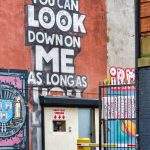
![STREET ART AT THE TIVOLI CAR PARK AS IT WAS IN JANUARY 2016 [SADLY THIS COMPLEX HAS BEEN REPLACED BY A HOTEL]-214090-1 STREET ART AT THE TIVOLI CAR PARK AS IT WAS IN JANUARY 2016 017](https://excellentstreetimages.com/HeadlessUrbanExpression/wp-content/uploads/2023/01/STREET-ART-AT-THE-TIVOLI-CAR-PARK-AS-IT-WAS-IN-JANUARY-2016-SADLY-THIS-COMPLEX-HAS-BEEN-REPLACED-BY-A-HOTEL-214090-1-1067x800.jpg)
![STREET ART AT THE TIVOLI CAR PARK AS IT WAS IN JANUARY 2016 [SADLY THIS COMPLEX HAS BEEN REPLACED BY A HOTEL]-214074-1 STREET ART AT THE TIVOLI CAR PARK AS IT WAS IN JANUARY 2016 001](https://excellentstreetimages.com/HeadlessUrbanExpression/wp-content/uploads/2023/01/STREET-ART-AT-THE-TIVOLI-CAR-PARK-AS-IT-WAS-IN-JANUARY-2016-SADLY-THIS-COMPLEX-HAS-BEEN-REPLACED-BY-A-HOTEL-214074-1-1422x1067.jpg)
![STREET ART AT THE TIVOLI CAR PARK AS IT WAS IN JANUARY 2016 [SADLY THIS COMPLEX HAS BEEN REPLACED BY A HOTEL]-214075-1 STREET ART AT THE TIVOLI CAR PARK AS IT WAS IN JANUARY 2016 002](https://excellentstreetimages.com/HeadlessUrbanExpression/wp-content/uploads/2023/01/STREET-ART-AT-THE-TIVOLI-CAR-PARK-AS-IT-WAS-IN-JANUARY-2016-SADLY-THIS-COMPLEX-HAS-BEEN-REPLACED-BY-A-HOTEL-214075-1-1422x1067.jpg)
![STREET ART AT THE TIVOLI CAR PARK AS IT WAS IN JANUARY 2016 [SADLY THIS COMPLEX HAS BEEN REPLACED BY A HOTEL]-214077-1 STREET ART AT THE TIVOLI CAR PARK AS IT WAS IN JANUARY 2016 003](https://excellentstreetimages.com/HeadlessUrbanExpression/wp-content/uploads/2023/01/STREET-ART-AT-THE-TIVOLI-CAR-PARK-AS-IT-WAS-IN-JANUARY-2016-SADLY-THIS-COMPLEX-HAS-BEEN-REPLACED-BY-A-HOTEL-214077-1-1422x1067.jpg)
![STREET ART AT THE TIVOLI CAR PARK AS IT WAS IN JANUARY 2016 [SADLY THIS COMPLEX HAS BEEN REPLACED BY A HOTEL]-214076-1 STREET ART AT THE TIVOLI CAR PARK AS IT WAS IN JANUARY 2016 004](https://excellentstreetimages.com/HeadlessUrbanExpression/wp-content/uploads/2023/01/STREET-ART-AT-THE-TIVOLI-CAR-PARK-AS-IT-WAS-IN-JANUARY-2016-SADLY-THIS-COMPLEX-HAS-BEEN-REPLACED-BY-A-HOTEL-214076-1-1422x1067.jpg)
![STREET ART AT THE TIVOLI CAR PARK AS IT WAS IN JANUARY 2016 [SADLY THIS COMPLEX HAS BEEN REPLACED BY A HOTEL]-214078-1 STREET ART AT THE TIVOLI CAR PARK AS IT WAS IN JANUARY 2016 005](https://excellentstreetimages.com/HeadlessUrbanExpression/wp-content/uploads/2023/01/STREET-ART-AT-THE-TIVOLI-CAR-PARK-AS-IT-WAS-IN-JANUARY-2016-SADLY-THIS-COMPLEX-HAS-BEEN-REPLACED-BY-A-HOTEL-214078-1-1424x1068.jpg)
![STREET ART AT THE TIVOLI CAR PARK AS IT WAS IN JANUARY 2016 [SADLY THIS COMPLEX HAS BEEN REPLACED BY A HOTEL]-214079-1 STREET ART AT THE TIVOLI CAR PARK AS IT WAS IN JANUARY 2016 006](https://excellentstreetimages.com/HeadlessUrbanExpression/wp-content/uploads/2023/01/STREET-ART-AT-THE-TIVOLI-CAR-PARK-AS-IT-WAS-IN-JANUARY-2016-SADLY-THIS-COMPLEX-HAS-BEEN-REPLACED-BY-A-HOTEL-214079-1-1102x827.jpg)
![STREET ART AT THE TIVOLI CAR PARK AS IT WAS IN JANUARY 2016 [SADLY THIS COMPLEX HAS BEEN REPLACED BY A HOTEL]-214081-1 STREET ART AT THE TIVOLI CAR PARK AS IT WAS IN JANUARY 2016 007](https://excellentstreetimages.com/HeadlessUrbanExpression/wp-content/uploads/2023/01/STREET-ART-AT-THE-TIVOLI-CAR-PARK-AS-IT-WAS-IN-JANUARY-2016-SADLY-THIS-COMPLEX-HAS-BEEN-REPLACED-BY-A-HOTEL-214081-1-1422x1067.jpg)
![STREET ART AT THE TIVOLI CAR PARK AS IT WAS IN JANUARY 2016 [SADLY THIS COMPLEX HAS BEEN REPLACED BY A HOTEL]-214080-1 STREET ART AT THE TIVOLI CAR PARK AS IT WAS IN JANUARY 2016 008](https://excellentstreetimages.com/HeadlessUrbanExpression/wp-content/uploads/2023/01/STREET-ART-AT-THE-TIVOLI-CAR-PARK-AS-IT-WAS-IN-JANUARY-2016-SADLY-THIS-COMPLEX-HAS-BEEN-REPLACED-BY-A-HOTEL-214080-1-1067x800.jpg)
![STREET ART AT THE TIVOLI CAR PARK AS IT WAS IN JANUARY 2016 [SADLY THIS COMPLEX HAS BEEN REPLACED BY A HOTEL]-214083-1 STREET ART AT THE TIVOLI CAR PARK AS IT WAS IN JANUARY 2016 009](https://excellentstreetimages.com/HeadlessUrbanExpression/wp-content/uploads/2023/01/STREET-ART-AT-THE-TIVOLI-CAR-PARK-AS-IT-WAS-IN-JANUARY-2016-SADLY-THIS-COMPLEX-HAS-BEEN-REPLACED-BY-A-HOTEL-214083-1-1422x1067.jpg)
![STREET ART AT THE TIVOLI CAR PARK AS IT WAS IN JANUARY 2016 [SADLY THIS COMPLEX HAS BEEN REPLACED BY A HOTEL]-214082-1 STREET ART AT THE TIVOLI CAR PARK AS IT WAS IN JANUARY 2016 010](https://excellentstreetimages.com/HeadlessUrbanExpression/wp-content/uploads/2023/01/STREET-ART-AT-THE-TIVOLI-CAR-PARK-AS-IT-WAS-IN-JANUARY-2016-SADLY-THIS-COMPLEX-HAS-BEEN-REPLACED-BY-A-HOTEL-214082-1-1422x1067.jpg)
![STREET ART AT THE TIVOLI CAR PARK AS IT WAS IN JANUARY 2016 [SADLY THIS COMPLEX HAS BEEN REPLACED BY A HOTEL]-214084-1 STREET ART AT THE TIVOLI CAR PARK AS IT WAS IN JANUARY 2016 011](https://excellentstreetimages.com/HeadlessUrbanExpression/wp-content/uploads/2023/01/STREET-ART-AT-THE-TIVOLI-CAR-PARK-AS-IT-WAS-IN-JANUARY-2016-SADLY-THIS-COMPLEX-HAS-BEEN-REPLACED-BY-A-HOTEL-214084-1-1268x951.jpg)
![STREET ART AT THE TIVOLI CAR PARK AS IT WAS IN JANUARY 2016 [SADLY THIS COMPLEX HAS BEEN REPLACED BY A HOTEL]-214086-1 STREET ART AT THE TIVOLI CAR PARK AS IT WAS IN JANUARY 2016 012](https://excellentstreetimages.com/HeadlessUrbanExpression/wp-content/uploads/2023/01/STREET-ART-AT-THE-TIVOLI-CAR-PARK-AS-IT-WAS-IN-JANUARY-2016-SADLY-THIS-COMPLEX-HAS-BEEN-REPLACED-BY-A-HOTEL-214086-1-1422x1067.jpg)
![STREET ART AT THE TIVOLI CAR PARK AS IT WAS IN JANUARY 2016 [SADLY THIS COMPLEX HAS BEEN REPLACED BY A HOTEL]-214085-1 STREET ART AT THE TIVOLI CAR PARK AS IT WAS IN JANUARY 2016 013](https://excellentstreetimages.com/HeadlessUrbanExpression/wp-content/uploads/2023/01/STREET-ART-AT-THE-TIVOLI-CAR-PARK-AS-IT-WAS-IN-JANUARY-2016-SADLY-THIS-COMPLEX-HAS-BEEN-REPLACED-BY-A-HOTEL-214085-1-1422x1067.jpg)
![STREET ART AT THE TIVOLI CAR PARK AS IT WAS IN JANUARY 2016 [SADLY THIS COMPLEX HAS BEEN REPLACED BY A HOTEL]-214087-1 STREET ART AT THE TIVOLI CAR PARK AS IT WAS IN JANUARY 2016 014](https://excellentstreetimages.com/HeadlessUrbanExpression/wp-content/uploads/2023/01/STREET-ART-AT-THE-TIVOLI-CAR-PARK-AS-IT-WAS-IN-JANUARY-2016-SADLY-THIS-COMPLEX-HAS-BEEN-REPLACED-BY-A-HOTEL-214087-1-733x550.jpg)
![STREET ART AT THE TIVOLI CAR PARK AS IT WAS IN JANUARY 2016 [SADLY THIS COMPLEX HAS BEEN REPLACED BY A HOTEL]-214089-1 STREET ART AT THE TIVOLI CAR PARK AS IT WAS IN JANUARY 2016 015](https://excellentstreetimages.com/HeadlessUrbanExpression/wp-content/uploads/2023/01/STREET-ART-AT-THE-TIVOLI-CAR-PARK-AS-IT-WAS-IN-JANUARY-2016-SADLY-THIS-COMPLEX-HAS-BEEN-REPLACED-BY-A-HOTEL-214089-1-1067x800.jpg)
![STREET ART AT THE TIVOLI CAR PARK AS IT WAS IN JANUARY 2016 [SADLY THIS COMPLEX HAS BEEN REPLACED BY A HOTEL]-214088-1 STREET ART AT THE TIVOLI CAR PARK AS IT WAS IN JANUARY 2016 016](https://excellentstreetimages.com/HeadlessUrbanExpression/wp-content/uploads/2023/01/STREET-ART-AT-THE-TIVOLI-CAR-PARK-AS-IT-WAS-IN-JANUARY-2016-SADLY-THIS-COMPLEX-HAS-BEEN-REPLACED-BY-A-HOTEL-214088-1-1422x1067.jpg)
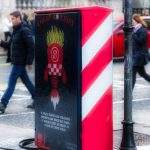
![CHEAP AS CHIPS [NOW I UNDERSTAND MOORE'S LAW]-214073-1 CHEAP AS CHIPS 003](https://excellentstreetimages.com/HeadlessUrbanExpression/wp-content/uploads/2023/01/CHEAP-AS-CHIPS-NOW-I-UNDERSTAND-MOORES-LAW-214073-1-1067x800.jpg)
![CHEAP AS CHIPS [NOW I UNDERSTAND MOORE'S LAW]-214071-1 CHEAP AS CHIPS 002](https://excellentstreetimages.com/HeadlessUrbanExpression/wp-content/uploads/2023/01/CHEAP-AS-CHIPS-NOW-I-UNDERSTAND-MOORES-LAW-214071-1-1422x1067.jpg)
![CHEAP AS CHIPS [NOW I UNDERSTAND MOORE'S LAW]-214072-1 CHEAP AS CHIPS 001](https://excellentstreetimages.com/HeadlessUrbanExpression/wp-content/uploads/2023/01/CHEAP-AS-CHIPS-NOW-I-UNDERSTAND-MOORES-LAW-214072-1-1200x900.jpg)